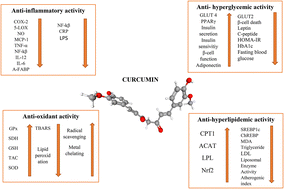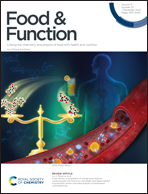Effects of curcumin, a bioactive component of turmeric, on type 2 diabetes mellitus and its complications: an updated review
Abstract
Type 2 diabetes mellitus (T2DM) is a substantial issue in public health. Recently, there has been considerable interest in the effectiveness of using herbal supplements for T2DM. Among the herbal supplements, turmeric (Curcuma longa L.) has been attracting an avalanche of attention owing to its main component, curcumin. This review examines the physiological activities and mechanisms of action of curcumin associated with T2DM and its complications. The literature indicates that pro-inflammatory cytokines along with oxidative stress play a very important role in diabetes pathogenesis. Since inflammation is a main cause of disruption of the β cell structure, the anti-diabetic characteristic of curcumin is mainly attributed to its anti-inflammatory as well as anti-oxidant activities. In addition to these activities, curcumin has been developed as a promising prevention/treatment choice for diabetes complications by modulating various critical signal steps owing to the anti-hyperglycemic and anti-hyperlipidemic activities of curcumin. Studies on diabetic humans and animals have revealed that curcumin may have positive effects on oxidative stress and inflammation and may reduce fasting blood glucose levels, increase insulin sensitivity/secretion and regulate the lipid profile. Thus, it may prevent and treat diabetes by affecting various molecular targets.

- This article is part of the themed collection: Food & Function Review Articles 2022


 Please wait while we load your content...
Please wait while we load your content...